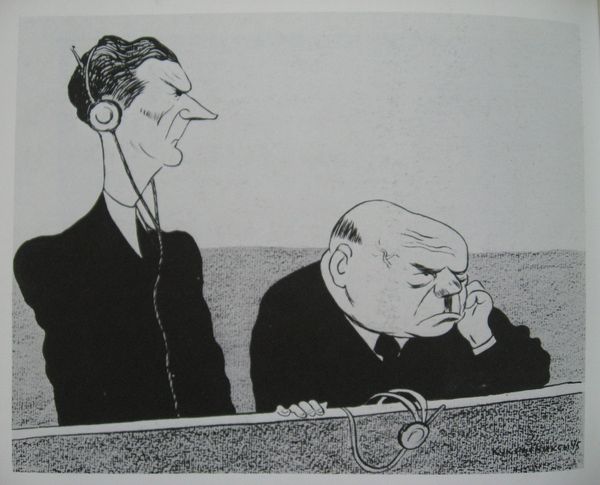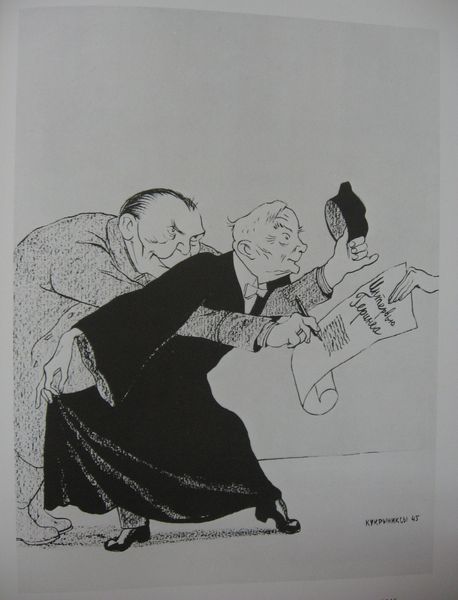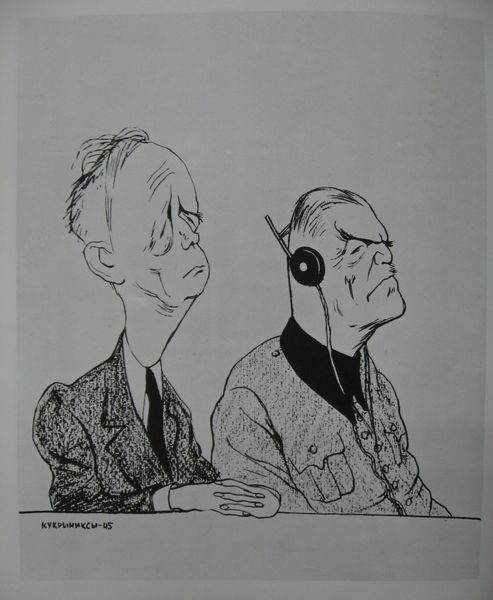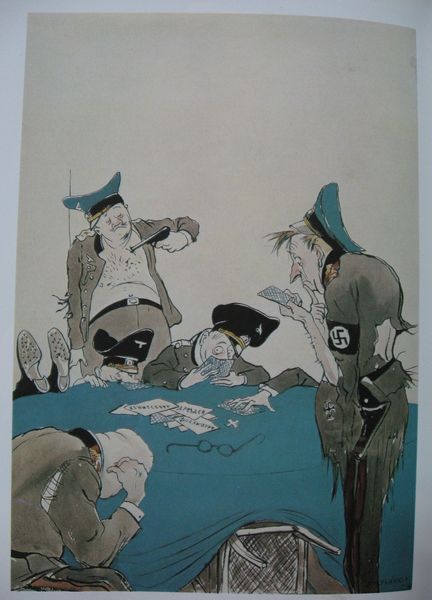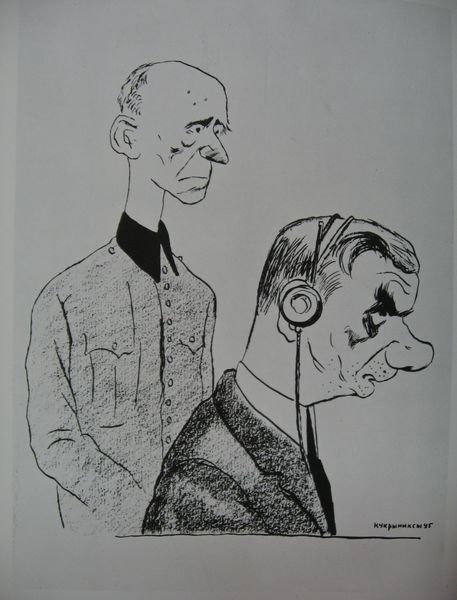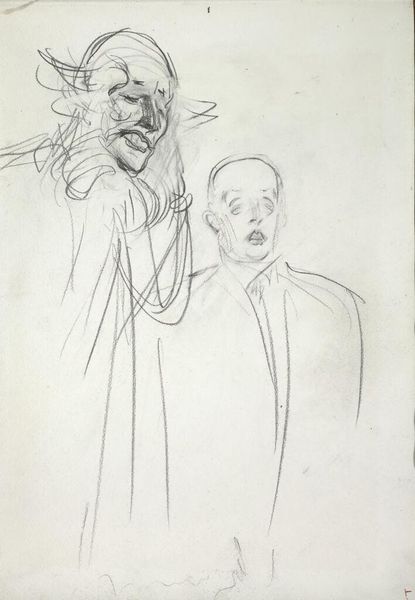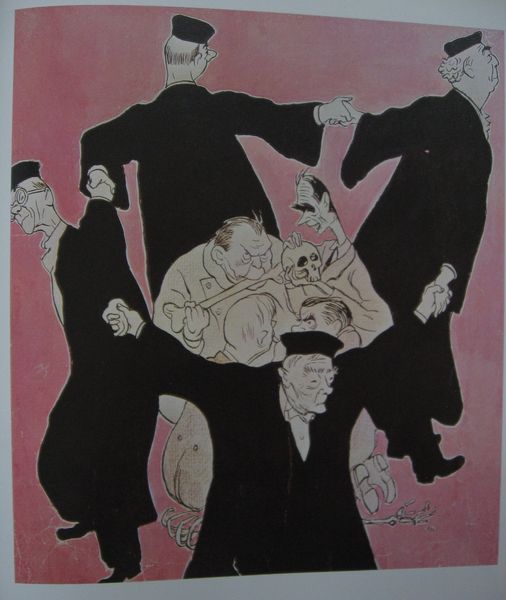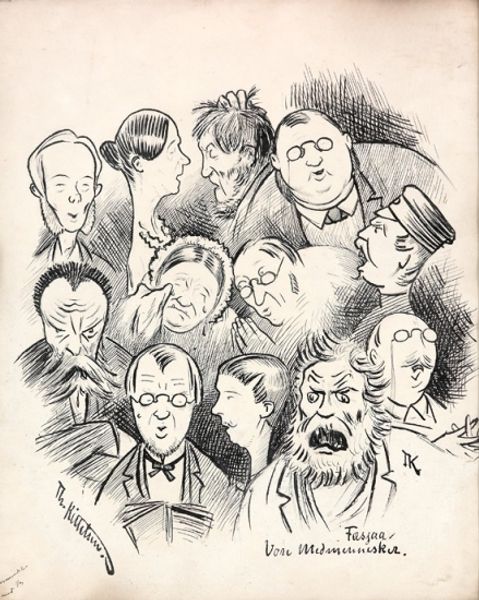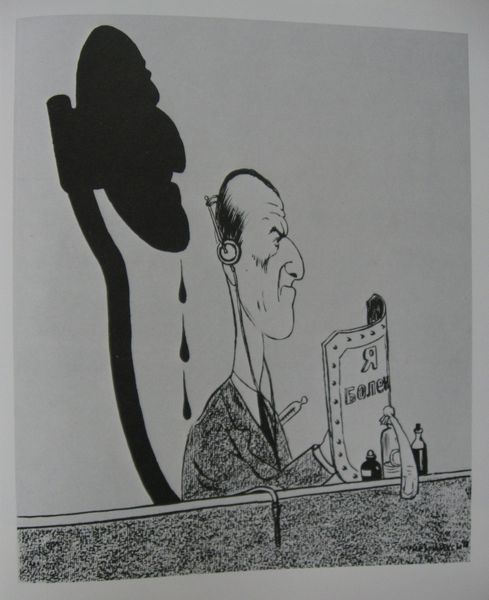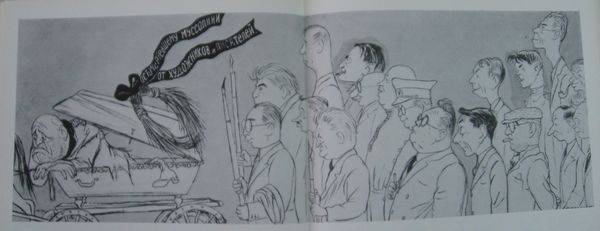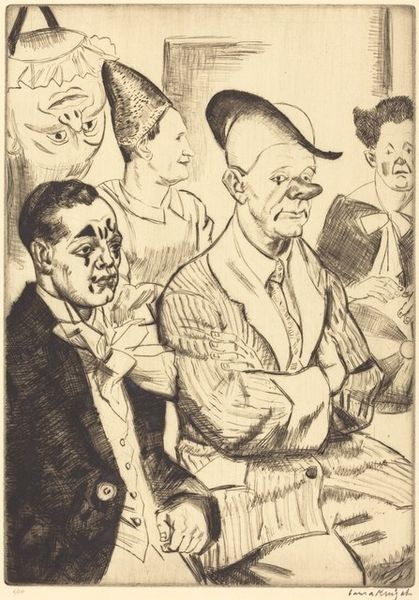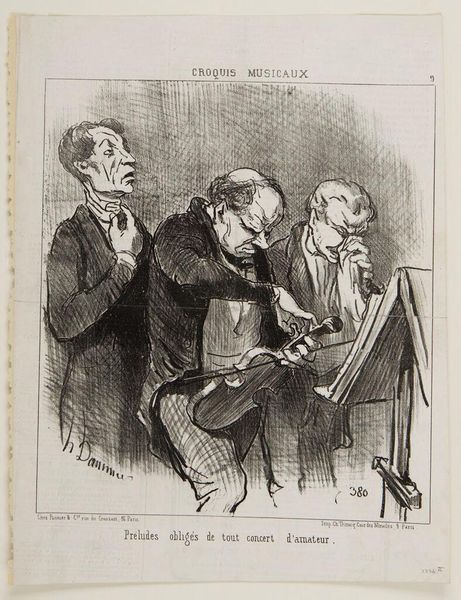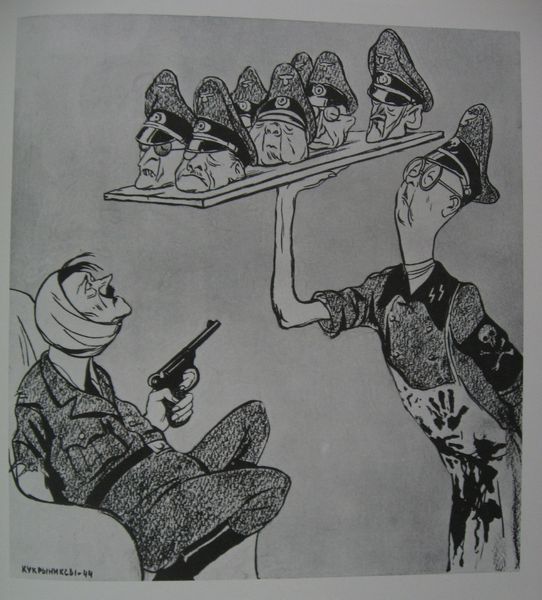
drawing, ink
#
portrait
#
drawing
#
caricature
#
caricature
#
soviet-nonconformist-art
#
ink
#
group-portraits
Copyright: Kukryniksy,Fair Use
Editor: So, this untitled drawing by the Kukryniksy collective—I don't have a date for it—it's done in ink and feels incredibly weighty, almost mournful. There's this overwhelming sense of...oppression, I guess. What do you see in this piece? Curator: Oppression is a strong word, and an appropriate one. The collective often used caricature, as we see here, to address power structures. Notice the subtle cues, like the towering figure with the headphones – an image of control, listening, observing. How do the other figures react to that gaze? Editor: Well, they all seem so burdened, like they're shrinking under his observation. Is there a reason the artist chose this exaggerated style? Curator: Exaggeration in art, especially in caricature, acts as a mirror. The artists use these distorted features to amplify inner states, social commentary, and historical truths. Consider these faces, lined with worry – are they individual portraits, or archetypes representing a collective experience of judgment, perhaps fear of authority? What resonates with you in their expressions? Editor: The eyes, definitely the eyes. They seem filled with resignation. The more I look, the more it feels like they represent something bigger than just these individual men. Curator: Precisely. Their expressions become symbols. Consider this work within the context of Soviet Nonconformist Art. They are imbuing individual visages with cultural significance. By playing with those cultural assumptions the piece gains emotional power and speaks across time. It's less about simple likeness and more about revealing collective psychology. Editor: That’s fascinating; it changes how I see the whole piece. What I initially interpreted as oppression is maybe…resignation in the face of oppression. It’s heavier than I initially thought. Curator: Indeed. By understanding the language of symbols employed here, this seemingly simple caricature reveals layers of historical and emotional meaning, demonstrating the endurance of visual symbols in shaping cultural memory.
Comments
No comments
Be the first to comment and join the conversation on the ultimate creative platform.
